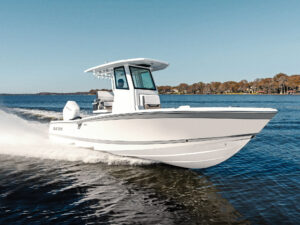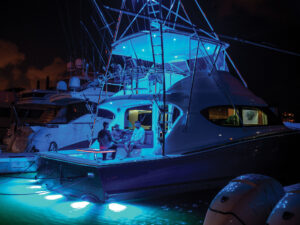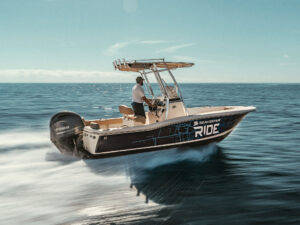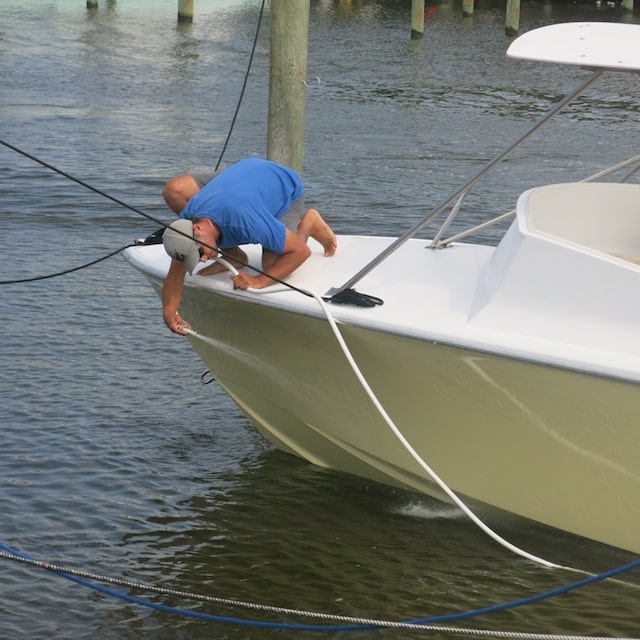
Cleaning the boat after a successful fishing trip is a chore most of us don’t relish. But a thorough washdown after exposure to salt spray helps protect against corrosion and other problems and maximizes the boat’s value. Here are some ways to make the task as quick and easy as possible.
Start by making it harder for dirt and salt crystals to stick. A coat of marine wax at least twice a year (before and after the prime season) makes short work of scrubbing and adds a protective barrier for the gelcoat and other finishes. Be careful of applying wax to non-skid, though, for obvious reasons.
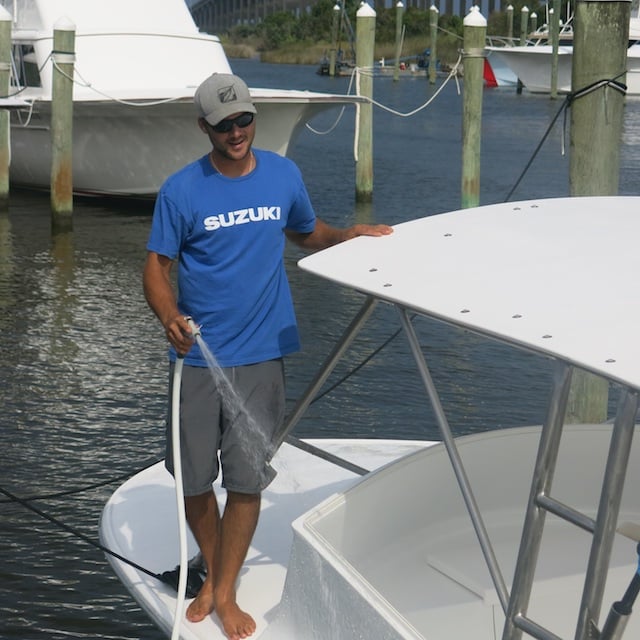
If your boat is equipped with a salt or freshwater washdown system, don’t hesitate to use it while fishing. Blood and slime comes off much easier while it’s still wet. Let it bake all day in the blazing sun and you’ll be cussing while you toil with the scrub brush afterwards. A long-handled boat brush dipped overboard will also work if you don’t have a washdown system.
Speaking of brushes, make sure to use the right one to avoid damage. Generally white bristle attachments are coarse and stiff, good for scouring non-skid and other uneven surfaces. Blue is medium soft and works well for smooth gelcoat, while yellow brushes are extremely soft for easily scratched surfaces like outboard cowlings or enclosures. Microfiber rags or wash mitts won’t scratch surfaces either and the fine fibers pick up the smallest bits of salt or dirt.

Before starting a wash job, rinse the boat completely with fresh water. That will help remove salt crystals that can scratch surfaces. If the boat is loaded back on the trailer, take that opportunity to rinse down the trailer frame, bunks and hubs too.
There’s no shortage of boat soaps on the market from many different sources, from pricey concentrates in gallon sizes to generic brands. Check the label first to make sure it won’t remove wax or else it’ll have to be constantly reapplied.
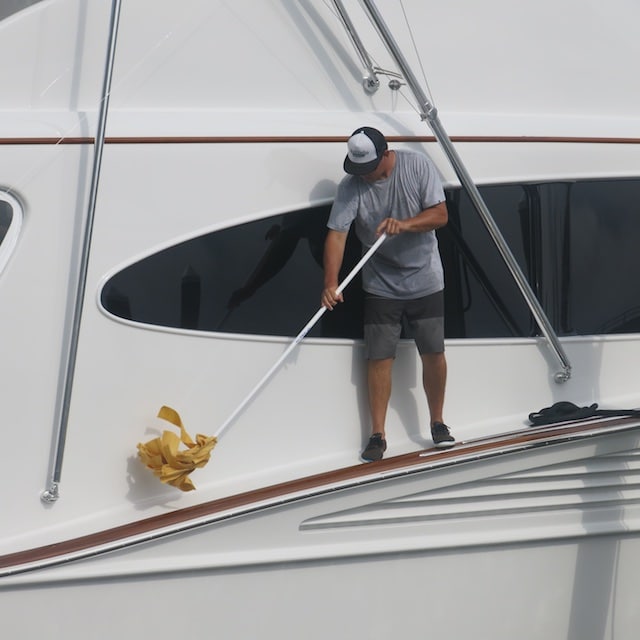
Using the appropriate brush or wash mitt, wash the boat completely with soapy water. It’s usually easier to do sections at a time, starting at the top. Rinse the soap off with fresh water after scrubbing. Don’t forget to do the fish boxes or you’ll have a smelly mess the next time you go. Only use fresh water to rinse down live wells, never detergent, to avoid leaving residue that would be harmful to the next batch of bait.
A leather or synthetic chamois or squeegee blade will remove excess water after the rinse to prevent water spots on gelcoat, brightwork, engines and electronic screens. If you’re pressed for time (or initiative), let the boat air dry. For boats that are stored covered or inside garages or sheds, propping open hatches a tiny bit will allow air to circulate and cut down on mildew.
Once the boat is clean, specialty products like aluminum polish and vinyl coatings can be applied to polish and protect metal parts and vinyl. Before applying any for the first time though, always try a test in a concealed spot to make sure there aren’t any adverse reactions or staining effects.

